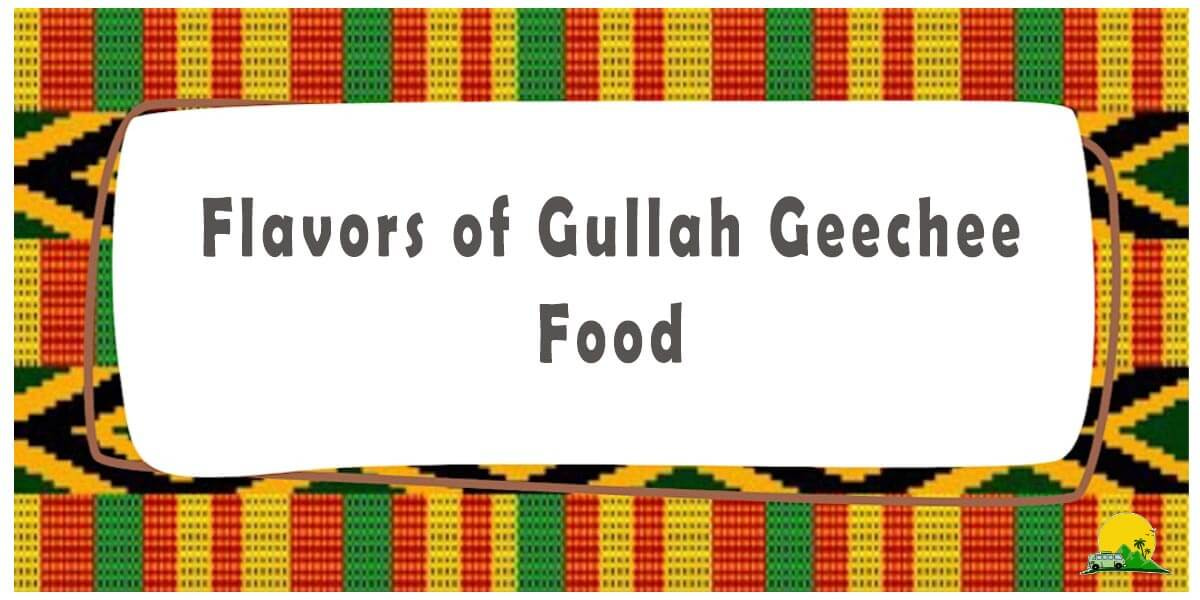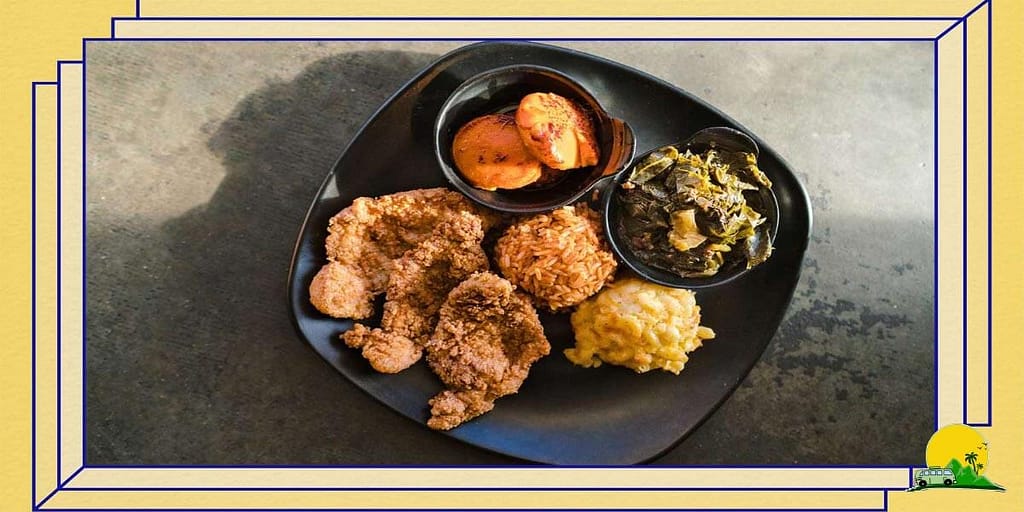An Invitation to Savor the Flavors of Gullah Geechee Food

An Invitation to Savor the Flavors of Gullah Geechee Food
The cuisine of the Gullah Geechee people is a truly unique culinary tradition with deep roots in the Lowcountry regions of South Carolina, Georgia, and Northeast Florida. Passed through generations, Gullah Geechee’s cooking represents blending West and Central African influences with ingredients and techniques adapted to the coastal environment. While elements of this cuisine can be found in other Southern cooking styles, Gullah Geechee’s food maintains a distinct character. In this article, we will explore the history and cultural significance of this tradition and how to identify and prepare some classic dishes.
index
ToggleGullah Geechee Origins and Influences
The origins of Gullah Geechee Food can be traced back to enslaved Africans first brought to the Lowcountry during the 17th and 18th centuries. Rice cultivation was a primary industry in the region during this period. Africans from areas like Sierra Leone and other parts of West Africa were imported for their expertise in growing rice. Settling in isolated coastal communities from North Carolina down to Northeast Florida, the Gullah Geechee people developed a unique Creole culture that helped them maintain aspects of their African heritage despite the oppression of slavery.
Food played an essential role in preserving West and Central African traditions. Cooking styles and ingredients from places like Sierra Leone, Ghana, and the Congo were adapted to the available resources of the Lowcountry. Rice became a staple crop, while vegetables, seafood, and meats were incorporated into traditional African soups and stews. Seasonings such as okra, hot peppers, and aromatic herbs provided flavor profiles reminiscent of home. Communal meals also took on social and spiritual significance to celebrate important events and maintain a sense of cultural identity.
Over time, Gullah Geechee Food absorbed influences from other groups as well. Native Americans living in the region at the time contributed cooking techniques for foods like barbecue. Enslavers introduced ingredients like salt pork and tomatoes. Meanwhile, the isolation of coastal communities allowed this blended culinary tradition to evolve separately from other Southern cooking styles. The result is a genuinely hybrid cuisine with roots spanning the Atlantic world.
Gullah Geechee Food Key Characteristics

While sharing similarities with other Lowcountry fare, there are some defining characteristics of Gullah Geechee cooking:
Rice – As experts in cultivation, rice is a dietary staple prepared in dishes like red rice and rice pilaf.
Seafood – Abundant shellfish, fish, and crab sources are featured in one-pot stews and boils utilizing the entire animal.
Vegetables – Local favorites include okra, tomatoes, collards, sweet potatoes, and bean seeds (sesame).
Seasonings – Spices like filé powder, thyme, bay leaves, and hot peppers provide flavor profiles of West and Central Africa.
Preservation – Salting, smoking, and drying methods allow full use of harvested foods throughout the year.
Communal meals – large pots of gumbo, soup, or rice dishes were traditionally shared among families and communities.
Practical cooking – Resourcefulness and the use of inexpensive cuts of pork and chicken reflect the cuisine’s origins.
By examining these characteristics, we can better understand what makes Gullah Geechee Food distinct even as it shares similarities with other Lowcountry fare. Keeping these influences in mind will help identify and prepare authentic traditional dishes.
Classic Dishes of Gullah Geechee Cuisine
Discussion of Gullah Geechee food would only be complete, highlighting some of the region’s most iconic and beloved dishes. While recipes may vary slightly between families and communities, the following stand out as classics representative of this rich culinary heritage:
Red Rice
As experts in cultivation, we know rice is a staple of the Gullah Geechee diet. Red rice gets its distinctive color from tomatoes, which are combined with rice, sausage or bacon, herbs, and seasonings. The flavors deepen and blend as the rice simmers. Red rice makes an appearance at celebrations and special occasions, and it also finds its way into other rice-based dishes.
Okra Soup
Also known as gumbo, this soup utilizes the entire okra plant and additional vegetables like tomatoes, corn, and beans. Seafood like shrimp, crab, or fish is often added. Thick and hearty, it is similar to the gumbos of Louisiana but begins with a tomato base rather than a roux. Seasonings like filé powder and hot peppers provide flavor.
Fried Fish
A simple preparation highlighting the abundance of local seafood. Whole fish like whiting or spotted sea trout are dredged in cornmeal and spices and then pan-fried until golden and crisp—the crunchy exterior yields moist, flaky flesh within. Fried fish pairs well with rice, collards, and cornbread.
Hoppin’ John
Black-eyed peas and rice in this beloved dish serve good luck for the new year. Traditional versions also include ingredients like smoked pork, representing the balance of flavors integral to Gullah Geechee’s cooking. Hoppin’ John provides sustenance and tradition on New Year’s Day.
Benne Wafers

A sweet treat utilizing the indigenous sesame seed known as “benne.” The seeds are roasted and ground, then combined with butter, sugar, and eggs in a thin batter and baked into crispy wafers. A specialty of Georgetown, South Carolina, these wafers have become a symbol of Gullah Geechee’s culture and heritage.
These five dishes merely scratch the surface of Gullah Geechee cuisine. Others worth exploring include she-crab soup, various one-pot stews, and desserts like benne pudding. Practicing authentic recipes can give one a deeper appreciation for this truly unique culinary tradition.
Preserving the Tradition
While elements of Gullah Geechee Food can be found on menus throughout the Lowcountry region, there is growing recognition of its cultural significance and culinary merits. Efforts are underway to preserve recipes, the Gullah language, and other traditions threatened by development and assimilation into mainstream culture. Community organizations, chiefs, and historians are essential in safeguarding this heritage.
The Penn Center hosts an annual Taste of Gullah Festival on St. Helena Island, celebrating the cuisine and culture. Cooking demonstrations provide opportunities to learn directly from Gullah community members. Meanwhile, chefs like BJ Dennis of Charleston have made it their mission to promote Gullah Geechee cuisine through classes, tours, and event appearances. Their work helps raise awareness among both locals and visitors to the Lowcountry.
Museums and historical societies also feature exhibits honoring this rich culinary legacy. The Charleston Museum holds the Gullah Collection, containing artifacts, documents, and even a cookbook from the 1930s recording traditional recipes. Such efforts help preserve both tangible and intangible aspects of Gullah Geechee’s cultural heritage for future generations.
With growing interest, elements of this cuisine can now be found beyond the Lowcountry as well. Restaurants from Atlanta to Asheville incorporate local ingredients into interpretations of dishes like she-crab soup and hoppin’ john. Meanwhile, supermarkets stock pantry items like sorghum and benne seeds, once only available in specialty shops. While commercial adoption brings opportunities and challenges, increased visibility helps ensure this culinary tradition will be recovered in time.
Read More: Amazing Culinary Traditions Around the World
Conclusion
The cuisine of the Gullah Geechee people represents the intersection of cultures along the Southeastern coastline. Through centuries of adaptation to the Lowcountry environment and the blending of African influences with Native American and European contributions, a truly unique culinary tradition emerged. Gullah Geechee’s food remains closely tied to cultural identity, community, and remembrance of traditions passed down through generations. This unique cuisine will endure for generations with continued appreciation and safeguarding of tangible and intangible heritage.
Recent Posts
Contact Us
+1 437 499 4559










